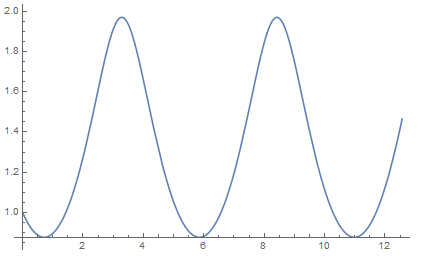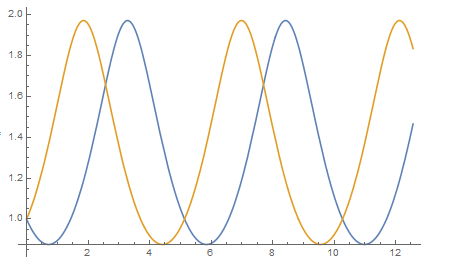Try:
eqN = {Sec[?[t]/2] (1 - Cos[?[t]] + 2 Cos[2 ?[t]] + 2 (1 + Cos[?[t]]) Derivative[1][?][t]^2) ==
0, ?[0] == 1};
solN = NDSolve[eqN, ?[t], {t, 0, 4*Pi}, Method -> {"EquationSimplification" -> "Residual"}]
Plot[Evaluate[?[t] /. solN], {t, 0, 4*Pi}]

1:
eq = {Sec[?[t]/2] (1 - Cos[?[t]] + 2 Cos[2 ?[t]] + 2 (1 + Cos[?[t]]) Derivative[1][?][t]^2) == 0};
INIT = Derivative[1][?][0] /. Solve[eq /. t -> 0 /. ?[0] -> 1, Derivative[1][?][0]](*A second initial conditions *)
Then we have:
$\theta '(0)=-\sqrt{\frac{-1+\cos (1)-2 \cos (2)}{2 (1+\cos (1))}}$ and
$\theta '(0)=\sqrt{\frac{-1+\cos (1)-2 \cos (2)}{2 (1+\cos (1))}}$
sol = ParametricNDSolve[{eq, ?[0] == 1, ?'[0] == a}, ?, {t, 0, 4*Pi}, {a}, Method -> {"EquationSimplification" -> "Residual"}];
Plot[{?[(INIT[[1]])][t] /. sol, ?[(INIT[[2]])][t] /. sol}, {t, 0, 4*Pi}]

2:
eq = {Sec[?[t]/2] (1 - Cos[?[t]] + 2 Cos[2 ?[t]] + 2 (1 + Cos[?[t]]) Derivative[1][?][t]^2) == 0};
INIT = Derivative[1][?][0] /. Solve[eq /. t -> 0 /. ?[0] -> 1, Derivative[1][?][0]](*A second initial conditions *)
sol = ParametricNDSolve[{D[eq,t], ?[0] == 1, ?'[0] == a}, ?, {t, 0, 4*Pi}, {a}];
Plot[{?[(INIT[[1]])][t] /. sol, ?[(INIT[[2]])][t] /. sol}, {t, 0, 4*Pi}]